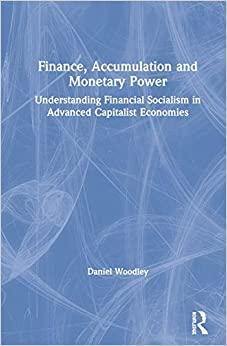Answered step by step
Verified Expert Solution
Question
1 Approved Answer
Below are three different investment alternatives, along with information on their expected return and return standard deviation. Suppose investors have the following utility function: U=E(R)1/2A2





Below are three different investment alternatives, along with information on their expected return and return standard deviation. Suppose investors have the following utility function: U=E(R)1/2A2 The coefficient of risk aversion (A) for Alice is 1.5 , and that for John is 2.5. Which investment will each investor pick? (hint: Find the investment giving the investor the highest utility level). Your complete portfolio consists of the T-bills and a risky portfolio P. To form this portfolio, you short-sell $2000 worth of Tbills and invest this $2000 together with your own $4000 in a risky portfolio P. The risk free rate is 6%. The expected return on portfolio P is 15%. The volatility of portfolio P is 18%. A. What are your complete portfolio's weights in the T-bills and P? B. What is the expected return and return volatility of your portfolio? C. What is the risk premium of your portfolio? Your complete portfolio consists of the T-bills and a risky portfolio P. To form this portfolio, you purchased $6000 worth of T-bills and invested $4000 in a risky portfolio P. The risk free rate is 6%. The expected return on portfolio P is 15%. The volatility of portfolio P is 18%. Answer the following questions: A. What are your complete portfolio's weights in the T-bills and P? B. What is the expected return and volatility of your portfolio? C. What is the risk premium of your portfolio? The risky portfolio expected return and standard deviation is 14% and 20%, respectively. The risk free rate is 5%. The risk aversion coefficient A is 2.5 and 4 for Mary and Kim, respectively. Answer the following questions: A. Who is more risk averse? B. What is the capital allocation y to the risky portfolio for each investor? C. Suppose investors have the following utility function: U=E(R)1/2A2 Calculate the Utility level for each investor's optimal complete portfolio. The risk free rate is 4%. The risky portfolio has an expected return of 15% and a return volatility of 20%. Investors can create complete portfolios out of these two assets. Answer the following questions: A. If an investor wants his complete portfolio to have an expected return of 12%, what is his capital allocation to the risky portfolio? B. If the investor has $1000 to invest, how does he invest this money to achieve such a complete portfolio? Below are three different investment alternatives, along with information on their expected return and return standard deviation. Suppose investors have the following utility function: U=E(R)1/2A2 The coefficient of risk aversion (A) for Alice is 1.5 , and that for John is 2.5. Which investment will each investor pick? (hint: Find the investment giving the investor the highest utility level). Your complete portfolio consists of the T-bills and a risky portfolio P. To form this portfolio, you short-sell $2000 worth of Tbills and invest this $2000 together with your own $4000 in a risky portfolio P. The risk free rate is 6%. The expected return on portfolio P is 15%. The volatility of portfolio P is 18%. A. What are your complete portfolio's weights in the T-bills and P? B. What is the expected return and return volatility of your portfolio? C. What is the risk premium of your portfolio? Your complete portfolio consists of the T-bills and a risky portfolio P. To form this portfolio, you purchased $6000 worth of T-bills and invested $4000 in a risky portfolio P. The risk free rate is 6%. The expected return on portfolio P is 15%. The volatility of portfolio P is 18%. Answer the following questions: A. What are your complete portfolio's weights in the T-bills and P? B. What is the expected return and volatility of your portfolio? C. What is the risk premium of your portfolio? The risky portfolio expected return and standard deviation is 14% and 20%, respectively. The risk free rate is 5%. The risk aversion coefficient A is 2.5 and 4 for Mary and Kim, respectively. Answer the following questions: A. Who is more risk averse? B. What is the capital allocation y to the risky portfolio for each investor? C. Suppose investors have the following utility function: U=E(R)1/2A2 Calculate the Utility level for each investor's optimal complete portfolio. The risk free rate is 4%. The risky portfolio has an expected return of 15% and a return volatility of 20%. Investors can create complete portfolios out of these two assets. Answer the following questions: A. If an investor wants his complete portfolio to have an expected return of 12%, what is his capital allocation to the risky portfolio? B. If the investor has $1000 to invest, how does he invest this money to achieve such a complete portfolio
Step by Step Solution
There are 3 Steps involved in it
Step: 1

Get Instant Access to Expert-Tailored Solutions
See step-by-step solutions with expert insights and AI powered tools for academic success
Step: 2

Step: 3

Ace Your Homework with AI
Get the answers you need in no time with our AI-driven, step-by-step assistance
Get Started


